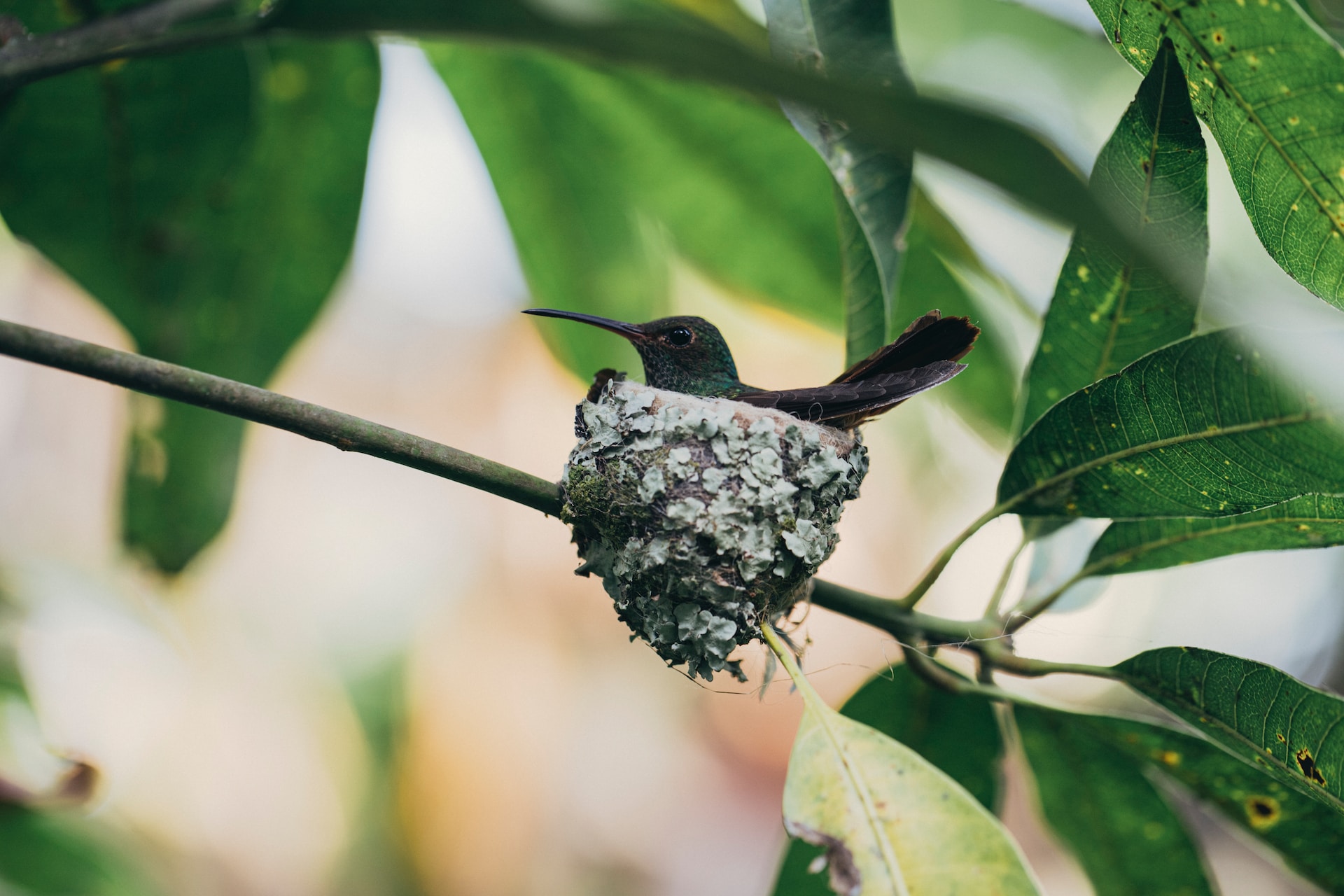When Do Hummingbirds Nest?
In the US, the hummingbirds’ nesting times usually coincide with the warmer months, generally starting in early spring. This timing aligns perfectly with the availability of abundant food sources like flowering plants and small insects. Interestingly, Jay’s Bird Barn highlights that the nesting behavior of these pint-sized powerhouses is intimately tied to their migratory patterns. For instance, in Arizona, Anna’s hummingbirds can nest as early as December, while their black-chinned counterparts typically start around February to May. On the other hand, ruby throated hummingbirds found in the eastern states usually nest from May to July.
Location and Material Preferences for Hummingbird Nests
Hummingbirds exhibit a keen preference for their nesting sites. These locations are typically high off the ground, often nestled in the fork of tree branches or securely tucked away in dense shrubs. Using a combination of various plant materials, hummingbirds weave their nests together with webs of spiders. The spider web not only lends elasticity to the nest, but it also provides strength, allowing for expansion as the young hummingbirds grow.
The unique structure of the hummingbird nest melds beautifully into the surrounding environment. Hummingbird Market confirms that these birds embellish the outer portions of their nests with lichens and small pieces of bark, enhancing the natural camouflage.
The Nesting Process
The process of hummingbird nesting is truly an art form. Our feathered friends meticulously shape their homes using their bodies, essentially sculpting the nest into a suitable crib for their eggs. According to Birds & Blooms, once the nest is correctly shaped, the female lays one to three, coffee bean-sized, white eggs.
During the incubation period, she tends to her eggs, staying alert for any potential danger. Upon hatching, the hatchlings are almost entirely helpless, remaining in the nest for a few more weeks while the mother feeds and nurtures them. More interestingly, hummingbird nests are minuscule! The entire nest would fit comfortably in the palm of your hand or atop a small coin, a testament to nature’s inherent beauty in simplicity.
How Can You Help?
While nature has its rhythms, there are several ways you can offer a helping hand to our winged wonders. Planting nectar-rich flowering varieties like fuchsia, bleeding hearts, or honeysuckle can attract hummingbirds seeking food in your neighborhood. Additionally, you can provide nesting materials, like small twigs and plant fluff, ensuring these resources are pesticide-free.
In regions where hummingbirds are common, refrain from excessive yard maintenance or overly enthusiastic pruning during the nesting season, as this could inadvertently harm a hidden hummingbird haven. It’s also worth noting that considering a hummingbird-friendly landscape can significantly increase the odds of these beautiful birds making your yard their seasonal home. Remember, small actions can make a world of a difference in supporting our feathered neighbors.
<small>Image source: https://unsplash.com/photos/black-and-white-bird-on-tree-branch-during-daytime-HQqsQ7c2SWo </small>

